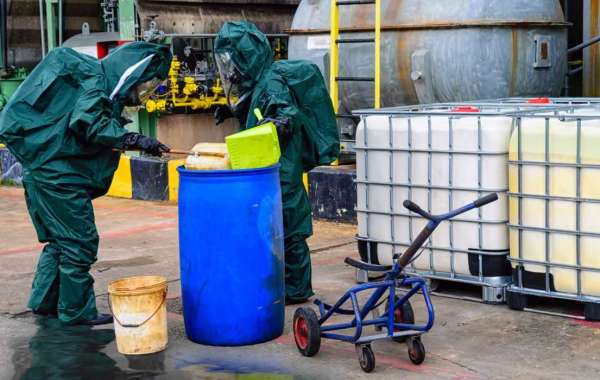In the wake of industrial advancement, chemical spills have become a critical concern, demanding swift and effective management to safeguard both people and the environment. Enter HSE consultants, the unsung heroes in this scenario. These professionals bring specialized knowledge and skills to the table, playing a pivotal role in emergency response and spill management. Their expertise not only helps in minimizing environmental damage but also ensures compliance with regulatory standards, making them indispensable in modern industrial operations.
Planning for Chemical Spills
COMAH Report
The Control of Major Accident Hazards (COMAH) regulations mandate a comprehensive approach to managing hazards, particularly chemical spills. A key component is the COMAH Report, which outlines emergency response arrangements. This report requires detailed planning for both immediate and long-term responses to chemical incidents. It must include an assessment of potential risks posed by hazardous materials on-site and strategies for mitigating these risks.
To comply, plants must identify all substances that could cause harm. They then develop a strategy that addresses how to control or eliminate these risks. This plan forms the backbone of a plant's emergency response capability.
Site Emergency Plan
Creating a site emergency plan in line with Regulation 9 of COMAH emphasizes simplicity, flexibility, and legislative compliance. The first step involves mapping out all possible scenarios involving hazardous substances like acids or other chemicals. From there, plants devise a plan detailing the immediate actions staff should take in the event of a spill.
This plan must be easily understood by all employees and tested regularly through drills. Its flexibility ensures that the plant can adapt to various types of chemical spills, while its compliance with legislation guarantees that all safety protocols meet national standards.
On-site vs. Off-site Plans
Having both on-site and off-site emergency plans is crucial. The on-site plan focuses on immediate measures to control a spill and prevent it from spreading. It includes steps for evacuation, containment, and first aid.
In contrast, the off-site plan prepares the wider community for potential impacts of a chemical spill. This might involve coordinating with local emergency services, communicating risks to nearby residents, and setting up support systems for those affected.
Emergency Response and Spill Control
Spill Procedures
Emergency spill control procedures are vital in managing chemical spills efficiently. They ensure safety and minimize environmental impact. The initial step involves immediate containment to prevent the spill from spreading. This might involve using barriers or absorbent materials specifically designed for spill control.
Next, safe rendering of the hazardous material is crucial. This could mean neutralizing acids or bases or applying other chemical treatments to reduce risks. Following this, a thorough cleanup is conducted to remove all traces of the chemical.
Waste Removal
Removing waste safely is the final step in the emergency spill control procedure. All contaminated materials must be disposed of according to local regulations. This ensures that the spill does not pose a long-term environmental hazard.
Fire Fighting
Effective emergency response also includes strategies for fire fighting. Appointing fire wardens and setting up firewater lagoons are key measures in managing chemical spills that catch fire. These arrangements help contain fires quickly and prevent them from spreading.
Fire wardens coordinate the evacuation and ensure that everyone follows emergency procedures correctly. Firewater lagoons provide a reservoir of water that can be used to fight fires related to chemical spills, offering an immediate response capability.
Safety and Training Measures
Emergency Procedures
Emergency operating procedures form the backbone of an effective safety management system. These procedures detail actions for raising alarms, tackling fires, controlling chemical spills and leaks, and evacuating sites and nearby premises. They are crucial for minimizing damage and preventing potential hazards from escalating.
Safety measures must be clear and accessible to all employees. This includes having emergency safety equipment readily available and ensuring that all staff know how to use it. Control procedures for hazardous situations should be practiced regularly through drills.
Staff Training
Training plays a pivotal role in preparing staff for emergency situations. It ensures that every employee understands evacuation procedures, identifies safe areas, and knows the assembly points outside the premises.
A comprehensive safety program includes training on the use of emergency safety equipment and familiarization with safety policies. This prepares staff not just to react during emergencies but also to prevent accidents through awareness of process safety hazards.
Designated Roles
During an evacuation, designated personnel have critical roles. They collect ID badges, conduct roll calls, and communicate with central emergency services. Their responsibilities ensure that everyone is accounted for and that emergency services are informed about the situation and any specific risks involved.
Assigning specific roles enhances the efficiency of evacuations and ensures a coordinated response to emergencies. It reflects an integrated safety management approach where every member knows their duties in crisis situations.
Closing Thoughts
HSE consultants play a pivotal role in managing chemical spills and ensuring an effective emergency response. Through careful planning, robust spill control measures, and comprehensive safety training, they safeguard both the environment and workplace safety. Your organization's readiness to handle chemical spills depends significantly on the knowledge and skills of these professionals. Embrace their guidance to enhance your preparedness for potential emergencies.
Taking action by engaging with HSE consultants can dramatically improve your response capabilities. Don't wait for a spill to happen; proactive measures can save lives, protect the environment, and preserve your reputation. Reach out to a trusted HSE consultant and take a significant step towards safer chemical handling and spill management. Your commitment to safety can make all the difference.







